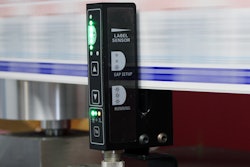1. Focus on the heat tunnel, with an eye to throughput. A properly functioning heat tunnel is the key to successful long-term operation. Heat tunnels are more than simple caverns with a conveyor where heat is applied; they are highly engineered machines, and each is specifically designed to meet unique packaging line conditions. It is virtually impossible to create an apples-to-apples comparison of heat tunnels from different manufacturers based solely on specifications, because the heat-shrink process is too complex. Look instead at throughput. In specifying machinery, require a written commitment of throughput efficiency while evaluating machines. You’ll likely choose a vendor that commits to a 99.5% throughput efficiency vs. another that claims 85%. However, it’s just as important to specify that the throughput rate must be confirmed prior to placement of the order.
2. Always consider size and shape. Package size and shape are two critical production variables for specifying heat-shrink label equipment. For example, the shrink characteristics of a film label for a straight side-walled container will be different from an hourglass-shaped package. The equipment supplier must take shape and size into consideration when designing the system. To achieve lowest total cost of ownership, the brand owner should determine whether the size and shape of the package might change in the next three to five years. If change is likely, provide the equipment supplier with enough information to design a system today that incorporates the flexibility to accommodate changes tomorrow.
3. Don’t forget material composition. The material composition of the package also affects the design considerations of the shrink-label solution. For example, a glass jar can absorb more heat than a PET container, and various compositions of PET handle heat differently. With all the effort to make packaging more sustainable, brand owners are lightweighting and using materials with greater recycled content. These changes may affect the shrink-label process. Look three to five years ahead and envision potential changes to the composition of the package. Work with the equipment manufacturer to include the flexibility needed to accommodate a range of materials.
























